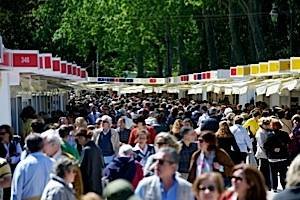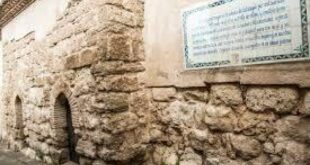By Josh Nathan-Kazis
Part 3: ‘Everyone Is Sephardic’
There was another problem with the ministers’ plan: It might give every single Jewish person in the world grounds to claim Spanish citizenship.
The Spanish and Portuguese Sephardim of New York — my people — have very particular ideas about who is and who isn’t Sephardic. If you count Syrian Jews,
Brooklyn is full of Sephardim. We don’t count Syrian Jews. “Real Sephardim are from Spain, Morocco, Algeria, Tunisia, Libya, and then Italy, France and then Greece, Turkey and the islands — Rhodes, Salonica,” said Norman Benzaquen, a Moroccan-born Jew and a prominent member of Shearith Israel, our Sephardic congregation in Manhattan. “Those are real Sephardic Jews. The rest call themselves Sephardic.”
That definition of Sephardic leaves out the Syrians, the Yemenites, the Iranians, and the Iraqis. There’s some historical validity in the distinction: The Yemenites and Iranian Jewish communities don’t descend from Iberian exiles, and the Syrian and Iraqi Jewish communities descend only in part from Iberian exiles. Yet all but the Yemenites adhere to Sephardic customs, and even the Yemenites follow some Sephardic sages.
Elitism requires sharp distinctions, however, and heavy currents of that elitism run through the Sephardic identity of families like mine. At the end of the 19th century, that elitism led lots of Nathans to marry their first cousins, including my great-great grandparents. Those cousin marriages were more about Sephardic purity than about social class: Plenty of German Jews in New York City were as rich as the Spanish and Portuguese Jews were by the 1890s. But it wasn’t until my great-grandparents got married in 1917 that German names start showing up on the genealogy.
Our family shaped itself around the notion that Sephardic blood was different. According to an October 2013 study by Joshua S. Weitz, a professor at the Georgia Institute of Technology, that notion is bullshit.
In direct response to the new citizenship proposal for Sephardim, Weitz built a genealogical model of Jewish ancestry that suggests that almost every Jew alive today had at least one ancestor expelled from Spain in 1492. A director of a quantitative biosciences group at Georgia Tech, Weitz was on a trip to Barcelona last May when he started wondering how one could claim descent from a person who died 550 years ago.
What’s complicated about making such a claim is that everyone has a ton of ancestors. Count back 20 generations and you have a cumulative total of over two million ancestors, assuming no inbreeding. “The major point here is that the number of Jewish ancestors, whether you’re Sephardic or Ashkenazic, becomes so large that the chance that none of those people are Sephardic becomes very small,” Weitz told me over the phone.
‘Real Sephardim are from Spain.’
Even if you assume very low levels of marriage between Ashkenazim and Sephardim, the vast number of ancestors of each individual Jewish person living today has means that there had to be, at some point, crosses between the two populations. (This leaves aside intermarriage between Jews and non-Jews, which doubtless also happened.) In a draft paper published on the academic website arXiv.org in October, Weitz wrote that, based on his calculations, it’s probably very common for each Jewish person today to have both Sephardic and Ashkenazi forebears.
“Nearly all present-day Jews are likely to have at least one (if not many more) ancestors expelled from Spain in 1492,” Weitz wrote.
In other words, every Jew is probably a little Sephardic.
Weitz stopped there, but it seems that Spaniards have taken his argument a step farther: If all Jews are Sephardic, maybe all Spaniards are Sephardic, too.

El Retiro, the big park in the middle of Madrid, is like a palace garden with no gates. Paths radiate out from small plazas to intersect with tree-lined avenues. In the spring, when everything is blooming, intellectual Spain gathers here for a big book fair. Hundreds of booths are set up along the Paseo Fernan Núñez, sponsored by publishing houses, government ministries, the army and whoever else has books to sell.
At Fernando M.-Vara de Rey’s booth, everyone wants to know whether he thinks they’re Jewish.
Vara de Rey works for the Centro Sefarad-Israel, a new government-sponsored cultural organization. In 2013, its stand was the only Jewish-themed booth at the fair. All day long Spaniards would come up to the booth, presenting evidence of their Jewish ancestry: last names, family legends, dark-colored eyes.
A surname like Herrero, for instance. Plenty of Jewish families hid their heritage by taking the names of their trades after they converted to Catholicism.Herrero in Spanish means blacksmith; someone with the last name Herrero could certainly have Jewish ancestors.
But dark-colored eyes?
In his office overlooking the back garden of the old Madrid palace where the Centro is based, Vara de Rey said that Spaniards are interested in Jews, but that they don’t know much about them. “This is a sympathy that’s a little mythical, a little innocent,” he said.

Vara de Rey thinks the interest in Jews may have to do with a series running on Spanish TV called “Isabel,” about the Spanish queen. Isabella, and the hot young actress who plays her, may be part of it. But it’s too pervasive to stop there. At times, it feels like everyone in the Iberian Peninsula thinks they might have Jewish roots.
A woman told me that she thought she was Jewish because her parents had always lit candles behind closed shutters on Friday nights. A man said that he thought he had Jewish roots because, among other reasons, his grandmother didn’t let him put his elbows on the dinner table. (I’m still trying to figure that one out.)
Claiming Sephardic ancestry, then, is fashionable in Spain. Given the tens of thousands of conversos, and the 20-odd generations that have lived and died here since the 1390s, it’s not unlikely that lots of people do have some sort of legitimate claim. Still, it felt like they were cutting in on my territory. Weitz’s argument, that every Jew has Sephardic blood, was intellectual and abstract — no German Jew is actually calling him or herself Sephardic based on an academic paper. In Spain, though, they were all grabbing at something I had thought was mine.
Fuente: http://m.forward.com
 eSefarad Noticias del Mundo Sefaradi
eSefarad Noticias del Mundo Sefaradi


Hola:
Por favor, ¿podríais corregir el enlace que conduce a la parte 1 del reportaje de Josh Nathan-Kazis?
Actualmente, el link que está debajo del texto se dirije erróneamente a la dirección:
https://esefarad.com/?p=53304
la cual corresponde a la página web de la parte 2. Ahí el relato continúa con el «dead piglet», pero no hay forma de acceder a la parte 1.
Muchas gracias y shavua tov.
Muchas gracias Jacobo, ya lo he arreglado.
Saludos cordiales
Liliana
Editora